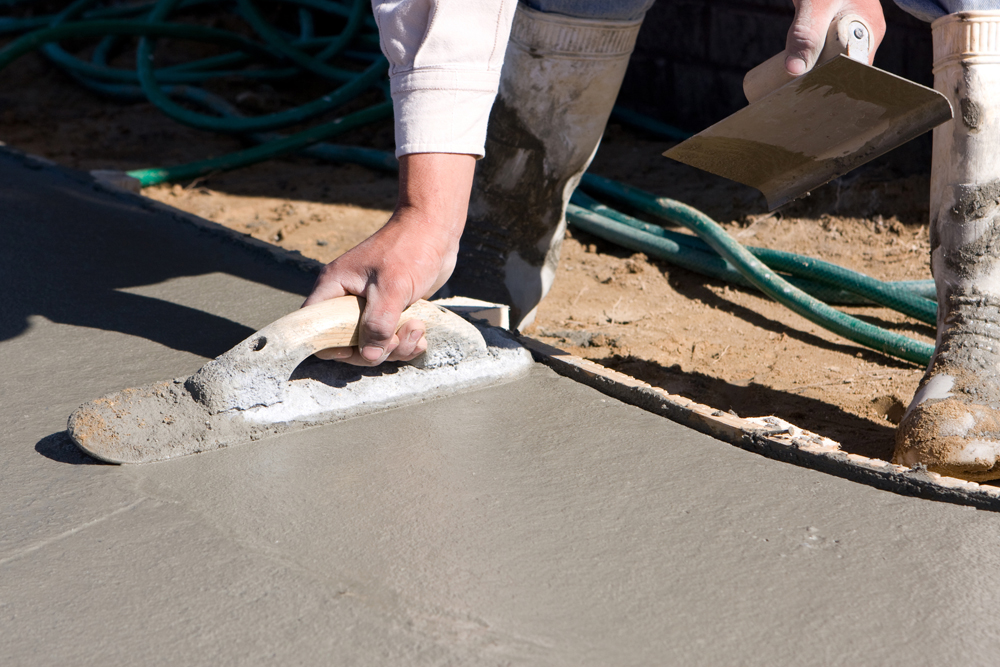The effects of cold weather on concrete

Concrete is one of the most versatile and cost-effective construction materials available. It’s used in commercial buildings, sidewalks, roads, bridges, and much more. While it’s common to see traditional gray concrete, it can also be stained many different colors to create a different look for floors or buildings.
But how does concrete hold up in cold weather? And can you pour new concrete in the cold?
How concrete is made
In order to answer these questions, it’s helpful to first understand a few basics about concrete. Concrete is formed when water is mixed with cement powder and an aggregate, such as small rocks. The cement powder then transforms from a liquid to a solid material because of a chemical reaction called hydration. This chemical reaction creates a process that leads to the mixture being crystallized.
Temperature plays a factor in how fast the chemical reaction begins. Warmer temperatures tend to make the chemical reaction happen quickly, while cold weather slows the process down.
The crystallization process does not end when the concrete is poured. Concrete will actually form more crystals over a period of time as it cures. The more crystals that form, the stronger the concrete becomes.
How cold weather affects concrete
Pouring concrete in cold weather can have a devastating effect on the concrete. For example, concrete that’s poured in temperatures near or below freezing adds the risk of water freezing within the concrete.
If the temperature drops below a certain threshold too early in the life of new concrete, the crystals stop growing, which impacts the strength of the concrete. In warmer weather, concrete can achieve its minimum required strength within 24 to 48 hours. But with every 20-degree drop in temperature, that time can double.
Pouring concrete in cold weather
While pouring concrete in cold weather is not ideal, there are some steps that can be taken if a project needs to be completed in winter. This includes keeping any surfaces in contact with the concrete free of ice and snow and above freezing for temperature. It also includes using the right concrete mix for the current weather conditions, which will help ensure a better cure and better strength.
In many cases, concrete restoration projects can wait until temperatures are warmer. However, some projects simply can’t wait if they pose a safety hazard or risk further damage if not fixed. In those cases, consult a professional restoration company to handle any concrete needs in cold weather.
